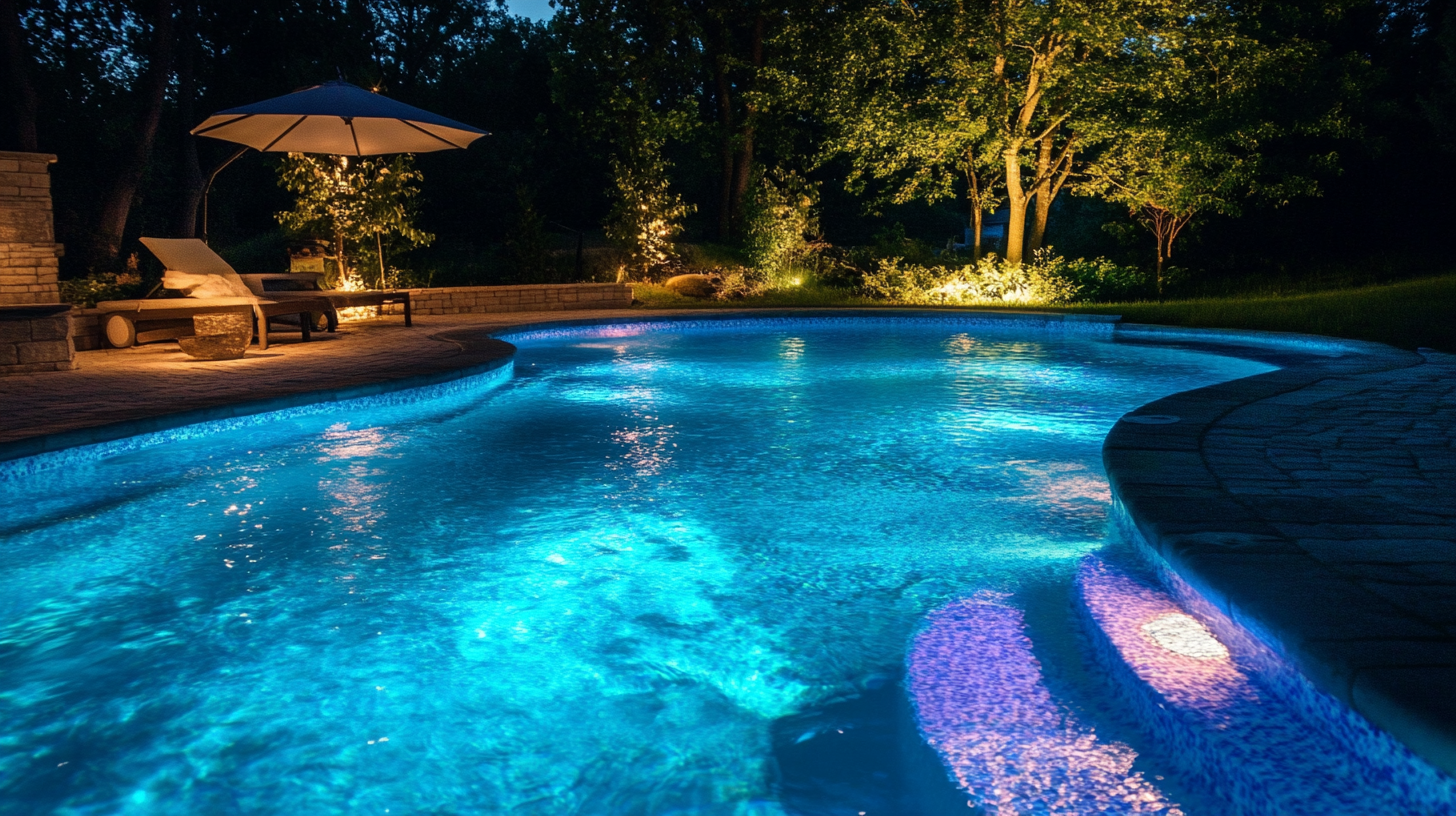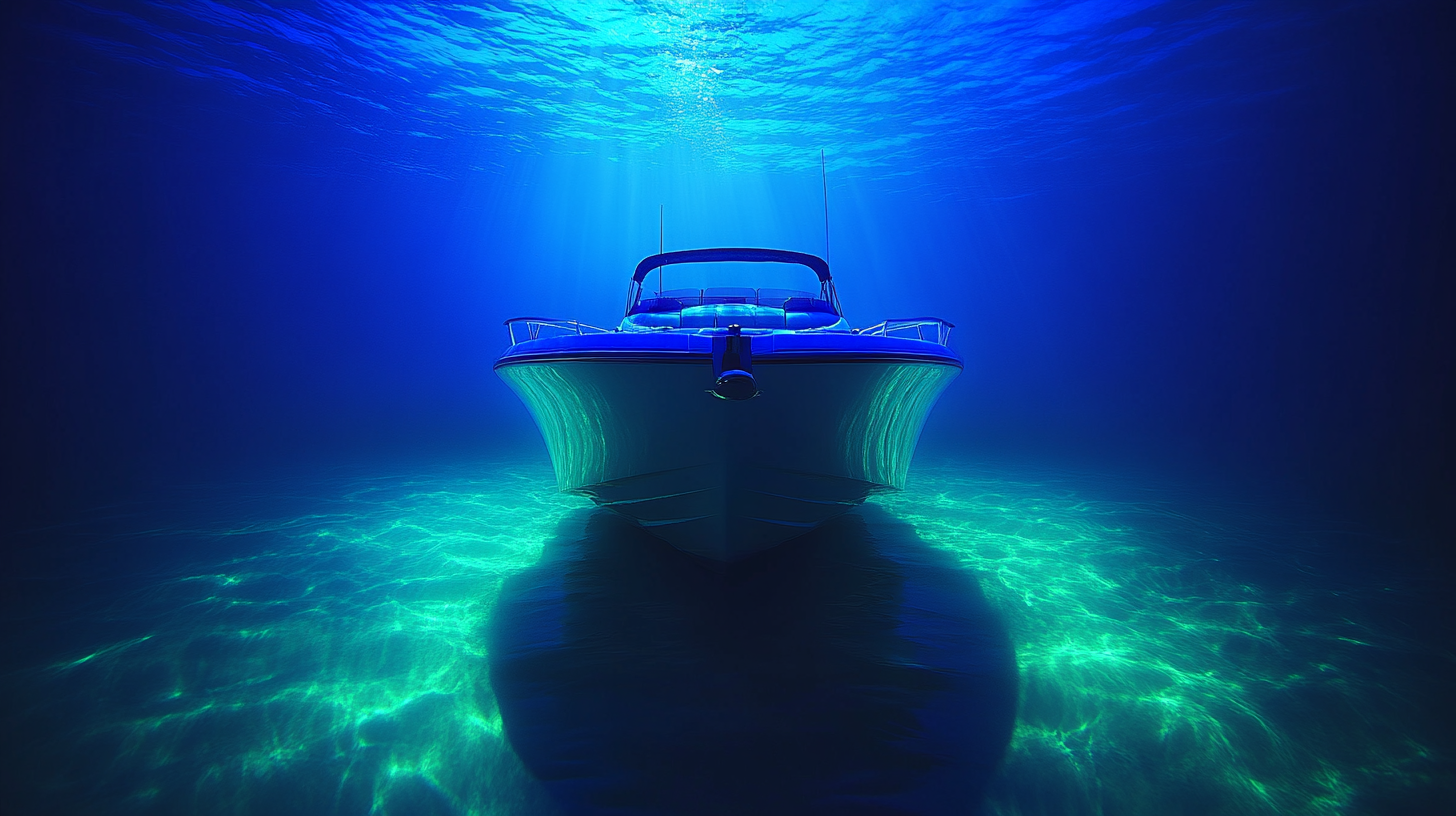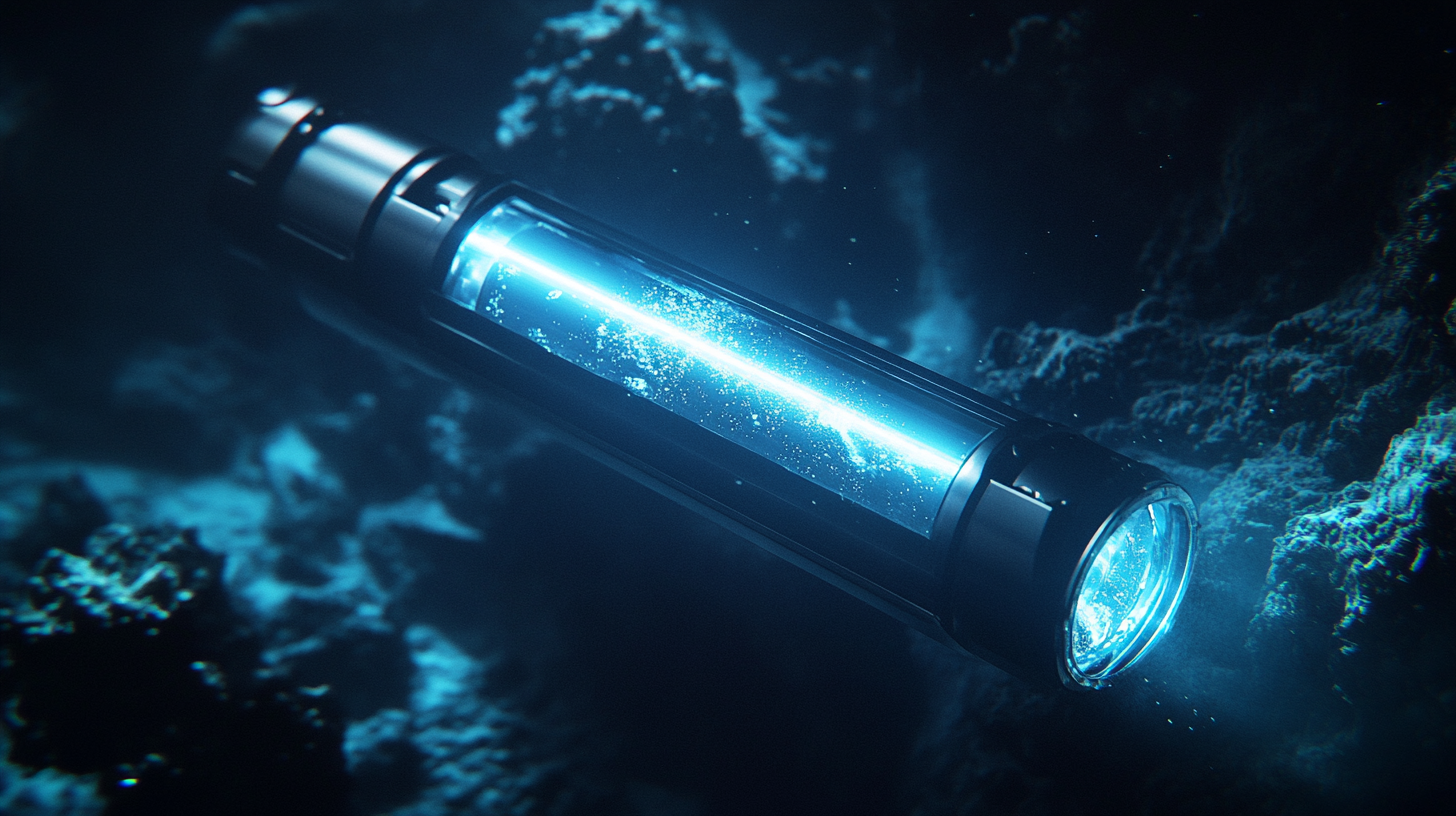Child-safe underwater pool lighting options
When it comes to creating a magical underwater ambiance while ensuring the safety of little swimmers, choosing the right lighting is crucial. Families are prioritizing peace of mind just as much as the aesthetic glow, making child-safe pool lighting an increasingly popular option. There are several types of lighting designed with safety in mind, and understanding their characteristics can help you make an informed decision.
One of the most common choices is LED lighting. Known for its energy efficiency and long lifespan, LED lights emit minimal heat, reducing the risk of burns or overheating and making them a child-safe option. These versatile lights are available in a spectrum of colors and can be remotely controlled, allowing you to adjust the mood of your pool area easily.
Fiber optic lighting is another excellent choice for those who prioritize safety. These lights do not conduct electricity through the cables in the pool itself, minimizing electrical risks. The light source is housed in a dry location outside the pool, with light transmitted through the fibers, making this a secure and innovative choice.
Solar-powered lights provide an eco-friendly alternative. They harness and store solar energy during the day, automatically lighting up the pool at night. With no direct wiring or electricity involved, these lights pose fewer risks, and their soft glow creates a soothing environment without compromising safety.
No matter which pool lighting options you choose, it is imperative to review the safety ratings and ensure they meet the relevant industry standards. Modern technology offers many ways to light up your pool without sacrificing safety, keeping the fun illuminated all summer long.
benefits of safe lighting solutions
Investing in child-safe pool lighting options provides an array of enticing benefits that go beyond the simple illumination of your swimming area. First and foremost, these lighting solutions significantly enhance the safety of nighttime swimming. By illuminating every corner of the pool, they ensure that your little ones are always visible, reducing the chances of accidents. The glow-in-the-dark setting creates a fairy-tale-like atmosphere, where children can let their imaginations run wild, all under your watchful eye.
In addition to promoting safety, child-safe underwater pool lighting also contributes to the aesthetic appeal of your backyard oasis. Imagine a kaleidoscope of colors dancing beneath the water’s surface, transforming your pool into a breathtaking spectacle. Whether it’s a leisurely evening swim or a lively pool party, the right lighting sets the mood, making every swim a memorable experience. This installation can elevate a simple backyard gathering into an enchanting retreat that neighbors will undoubtedly envy.
Moreover, modern pool lighting options are designed with energy efficiency in mind. LED, fiber optic, and solar-powered lights consume significantly less energy than traditional incandescent bulbs. This efficiency means lower electricity bills, leaving more room in the budget for those extra pool floaties or perhaps an upgrade to a snazzier poolside grill. Plus, since these lights have a longer lifespan and require less frequent replacement, they help preserve our planet’s resources—it’s a win for your wallet and the environment!
Furthermore, these lighting systems are not all flash and no substance. They also offer versatility and convenience like never before. Many come with remote control or smartphone app integration, allowing you to change colors, adjust brightness, or set timers without ever leaving your seat. This not only simplifies the experience for parents but also ensures that you’re always in control of the ambiance you wish to create.
Embracing child-safe pool lighting options is not just about practicality; it’s about creating a safe, magical environment that adds joy to your family’s leisure time. With innovative designs and customizable features, these lighting solutions promise dazzling evenings filled with laughter and swimming adventures, while providing peace of mind for parents.
important safety features to consider
When selecting child-safe pool lighting options, understanding the essential safety features is paramount to keeping swimming areas hazard-free. First and foremost, opting for lighting fixtures with robust waterproofing is crucial. Ensure the lights have a high IP (Ingress Protection) rating, indicating they are sealed against water intrusion, preventing shorts and electrical hazards. It’s not just about keeping water out; these fixtures should endure chlorinated environments too. Choose materials that resist rust and corrosion, which can compromise both safety and aesthetics over time.
A vital safety consideration is the voltage of the pool lighting system. Using low-voltage lighting, typically 12 volts, is preferred for underwater applications. Low-voltage systems significantly reduce the risk of electrical shocks, making them a secure choice for areas frequented by children. In addition, these systems often come with interlinked ground fault circuit interrupters (GFCIs), providing an extra layer of protection by immediately cutting off power if an electrical fault is detected.
Durability also plays a key role in safe lighting choices. Consider fixtures made from impact-resistant materials like tempered glass and robust plastics. These materials not only withstand the inevitable bumps from floating toys and energetic swimmers but also ensure minimal maintenance. Additionally, look for lights with shatterproof covers, which further decrease the risk of shattered glass in the pool, keeping swimming sessions safe and worry-free.
Ensuring that your pool lighting complies with relevant safety standards is another critical step. All pool lighting must adhere to standards set by authorities such as UL (Underwriters Laboratories) and the National Electric Code (NEC) for wet environments. It’s a good idea to review these certifications when purchasing pool lighting to guarantee compliance with up-to-date safety regulations.
Safety is not just about the technology but also about ease of use. Consider pool lighting options with child-friendly designs, such as remote and automated controls, which allow parents to manage lighting settings effortlessly. Features like dimmable lights and automatic shut-off timers can enhance safety, ensuring that the pool is not overlit and energy is conserved when the pool is not in use.
Lastly, maintenance accessibility is paramount. Choose lighting that comes with easy-to-follow installation and removal procedures to reduce hassles and potential safety risks during the setup and upkeep process. These practical features ensure that keeping the pool area secure is straightforward, making pool lighting a delightful addition rather than a daunting task.
installation tips for optimal safety
Ensuring the optimal safety of your child-safe pool lighting during installation is crucial to creating a secure swimming environment. First and foremost, it’s essential to choose the right location for the lights. Installing lighting at the deepest end of the pool can maximize light dispersal and evenly illuminate the entire pool area, minimizing dark spots where accidents might occur. Additionally, avoid placing lights too close to pool edges, steps, or ladders to prevent glare, which can be particularly hazardous during entry and exit times.
When selecting the mounting height and angle, aim to position the lights at approximately 12 to 18 inches below the waterline. This placement typically yields the best results, providing an even glow across the water’s surface without casting shadows. Ensure all light fixtures are securely fastened and sealed to prevent water seepage, which can lead to electrical failures and potential hazards.
Using dedicated, waterproof junction boxes and conduit for electrical connections is critical in maintaining a child-safe pool lighting setup. Always adhere to local electrical codes and installation guidelines to assure compliance and safety. A professional electrician should review the setup, especially when handling electrical wiring and connections, to verify that everything meets safety standards.
Ground Fault Circuit Interrupters (GFCIs) should be installed as part of your pool lighting wiring system. GFCIs provide vital protection by cutting off electricity if any imbalance is detected, significantly reducing the risk of electrical shock.
Properly securing the power supply is another essential aspect of a safe lighting installation. Position the power source and any electrical components at the required distance from the pool, usually at least five feet, to prevent water exposure. This distance not only meets most safety regulations but also helps safeguard against potential water damage.
Including child-friendly controls further enhances safety, allowing for quick adjustments in lighting settings without needing to approach the pool’s edge unnecessarily. Consider remote controls or installed switches placed at safe distances from the pool, ensuring ease of operation for supervising adults.
Lastly, ensure clear and easily accessible documentation of the installation process. This documentation can serve as a guide for maintenance or future troubleshooting, keeping the pool lighting options operable and safe for years to come. Routinely check the installed lights and connections for wear or damage as part of ongoing safety maintenance, and address any issues immediately to maintain a safe and inviting swimming environment.
maintenance and troubleshooting advice
Maintaining child-safe pool lighting options goes beyond just keeping them bright and inviting—it’s a critical aspect of pool safety. Regular maintenance ensures the lights function properly while reducing the risk of potential hazards. Start with routine visual inspections to check for any visible signs of wear and tear or damage. This includes looking for cracks, water intrusion, or any fraying wires that might compromise the safety of the lighting system.
Keeping the lenses clean is another essential part of maintaining your pool lights. Over time, mineral deposits and algae can cloud the lenses, diminishing light output and the overall ambiance. Regularly wipe down the lenses with a non-abrasive solution to clear away any build-up, ensuring your pool remains a well-lit and inviting space.
Particularly for LED, fiber optic, or solar-powered systems, checking the power connections is crucial. Ensure that waterproof seals and gaskets remain intact and secure. Faulty seals can lead to water leaks that might result in electrical failures, so replacing any compromised seals promptly is vital. If your setup uses solar power, periodically clean the solar panels to ensure optimal energy absorption and efficiency.
Troubleshooting pool lighting doesn’t have to be daunting. If a light fails to turn on, first check the power source and switches. A power outage or tripped breaker may be to blame, in which case resetting the necessary components could be the simple fix. If lights flicker or dim, check for loose connections or wiring issues that need tightening or replacement. Remember, handling electrical components requires caution—never hesitate to call a professional if you’re unsure or the problem persists.
A proactive approach is key to keeping swim nights safe and stress-free. Schedule regular maintenance checks—perhaps coordinating with broader pool maintenance tasks—to ensure all systems are functioning properly. This approach not only keeps the pool lighting options safe for children but also prolongs the lifespan of your investment.
Lastly, keep an eye on technological advancements in pool lighting. Manufacturers continually improve the robustness and efficiency of their products, which might offer additional safety features worth considering for your existing setup. By staying informed and diligent with maintenance, your child-safe pool lighting can provide delightful leisure experiences for years to come.


